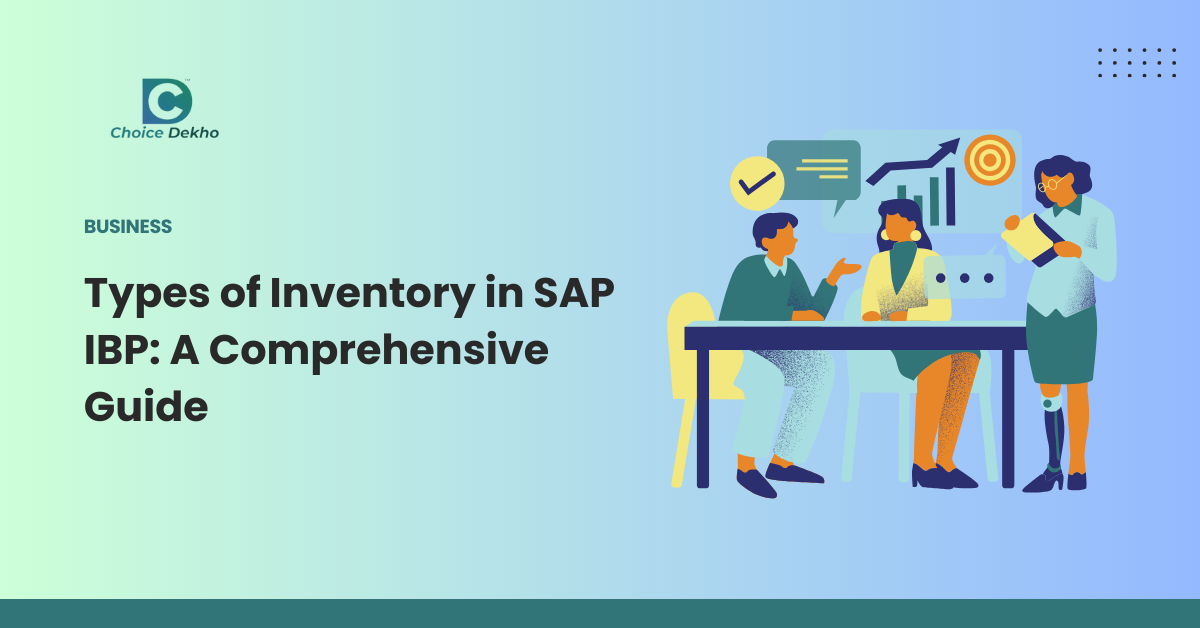For a business to be able to effectively manage inventory for optimal stock levels, cost, and customer satisfaction, all elements must work in harmony. Suppose, for instance, that a company utilizes SAP Inventory solutions as part of their system in place to further improve stock levels. In that case, it will greatly facilitate the business’ supply chain management operations, especially when using SAP Integrated Business Planning (SAP IBP). In this article, we’ll examine the various kinds of inventory in SAP IBP and how they help in supply chain management.
6 Types of Inventory in SAP IBP
1. Pipeline Inventory
Stocks of goods that are always in motion between suppliers, warehouses, or distribution centres can be termed pipeline inventory. Managers actively monitor it because it determines order completion deadlines. Shipment tracking, delivery estimations, and transportation route optimisation are essential features. The tools introduced by SAP Inventory help maintain a seamless flow of inventory. Using inventory in SAP, companies are able to minimise delays and further improve their replenishment cycles.
2. Safety Stock Inventory
As the name suggests, safety stock is the extra inventory kept on hand to protect against supply and demand fluctuations. When relying on unexpected demand, businesses can turn to SAP Inventory, where advanced algorithms help in determining ideal safety stock levels. The risk of production halting is eliminated while drastically improving the efficiency of the entire supply chain.
3. Cycle Stock Inventory
Cycle stock refers to preparing and keeping levels of inventory that can satisfy expected regular demands for a defined period of time. SAP Inventory keeps track of cycle stock levels in relation to production lead times, historical sales, and seasonal demand patterns.
4. Pre-Build Inventory
Pre-build inventory refers to gathering stock in advance, such as before a big campaign, seasonal sales, or promotional deals. With SAP Inventory, businesses are capable of modelling numerous demand scenarios and ensuring resources are allocated in order to avert stock deficits during peak periods. This way, supply chain operations remain smooth and sales opportunities are available for the business.
5. Work-in-Process (WIP) Inventory
Partitions of products that are yet to be completed and thus, are still under the manufacturing phase are classified as work-in-process inventory. Efficient Work-in-Process Inventory in SAP IBP helps companies streamline production workflow and eloquently manage inputs and cycle times.
6. Archive of Complete Items Requisitioned
Products available for sale or distribution fall under the completed goods inventories. The use of SAP IBP enables a company to manage its demand forecasting, warehousing, and order processing in one place.
Build on Your Knowledge with SAP Dekho Inventory Courses
To better explore the SAP inventory realm, examine these Choice Dekho courses to learn more about efficiently managing your inventory.
- SAP WM (Warehouse Management) Certification Training
- SAP S/4 HANA EWM – Extended Warehouse Management
- SAP MM – Material Management with exam ready practice test
SAP inventory solutions allow for the effective management of diverse inventory types, from pipeline inventory to finished goods, by improving visibility and streamlining processes. Using inventory in SAP, a company minimises excess stock and maximises profits while becoming more resilient against supply chain issues. Using SAP IBP for inventory control will aid in strengthening long-term supremacy, allowing companies to remain flexible and responsive to the constantly changing and severe market conditions.




